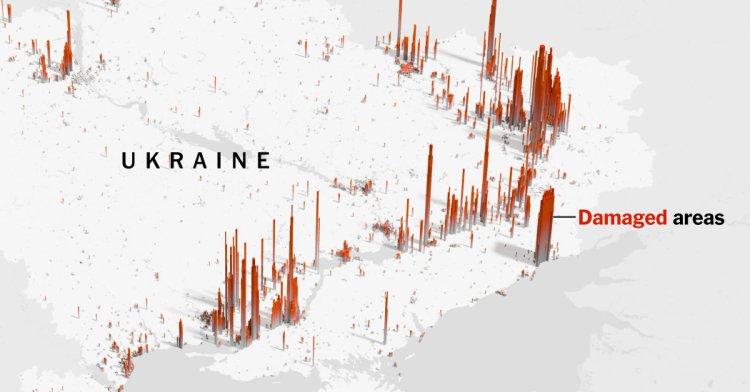NYT: ‘What Ukraine Has Lost During Russia’s Invasion’
Marco Hernandez, Jeffrey Gettleman, Finbarr O’Reilly, and Tim Wallace, with reporting and imagery for The New York Times: Few countries since World War II have experienced this level of devastation. But it’s been impossible for anybody to see more than glimpses of it. It’s too vast. Every battle, every bombing, every missile strike, every house burned down, has left its mark across multiple front lines, back and forth over more than two years. This is the first comprehensive picture of where the Ukraine war has been fought and the totality of the destruction. Using detailed analysis of years of satellite data, we developed a record of each town, each street, each building that has been blown apart. The scale is hard to comprehend. More buildings have been destroyed in Ukraine than if every building in Manhattan were to be leveled four times over. Parts of Ukraine hundreds of miles apart look like Dresden or London after World War II, or Gaza after half a year of bombardment. To

Marco Hernandez, Jeffrey Gettleman, Finbarr O’Reilly, and Tim Wallace, with reporting and imagery for The New York Times:
Few countries since World War II have experienced this level of devastation. But it’s been impossible for anybody to see more than glimpses of it. It’s too vast. Every battle, every bombing, every missile strike, every house burned down, has left its mark across multiple front lines, back and forth over more than two years.
This is the first comprehensive picture of where the Ukraine war has been fought and the totality of the destruction. Using detailed analysis of years of satellite data, we developed a record of each town, each street, each building that has been blown apart.
The scale is hard to comprehend. More buildings have been destroyed in Ukraine than if every building in Manhattan were to be leveled four times over. Parts of Ukraine hundreds of miles apart look like Dresden or London after World War II, or Gaza after half a year of bombardment.
To produce these estimates, The New York Times worked with two leading remote sensing scientists, Corey Scher of the City University of New York Graduate Center and Jamon Van Den Hoek of Oregon State University, to analyze data from radar satellites that can detect small changes in the built environment.
A staggering, sobering work of journalism and data visualization.
What's Your Reaction?










![[Sponsor] DetailsPro](https://technetspot.com/uploads/images/202406/image_650x433_666a1a52a8ab5.jpg)

![[Computex] The new be quiet cooling!](https://technetspot.com/uploads/images/202406/image_100x75_6664d1b926e0f.jpg)








